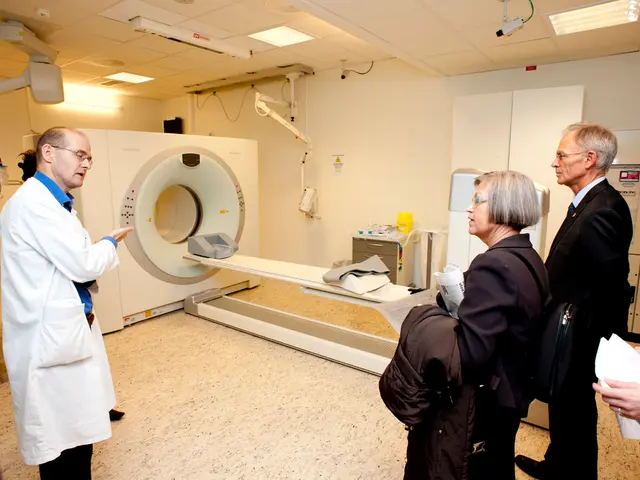Revolutionary Insulin Patch Set to Potentially Eliminate Diabetic Injections
### Revolutionary Smart Patch Eliminates Daily Injections for Type 1 Diabetes Management
American researchers have developed a groundbreaking innovation in diabetes care – a "smart patch" that could replace daily injections for people with type 1 diabetes. This non-invasive, painless solution addresses the physical and psychological burdens of diabetes management, offering significant improvements in health outcomes, particularly for children and the elderly or those with physical limitations.
The smart patch, just 4 centimeters wide and containing over 100 microneedles smaller than eyelashes, works by monitoring glucose levels in the interstitial fluid and delivering insulin or other antidiabetic drugs when blood sugar spikes. This biomimetic design imitates the natural biological process of the human pancreas, providing a more efficient and effective method of glucose regulation.
The microneedles are embedded with sophisticated glucose-sensing enzymes that detect when blood sugar rises too high. Once activated, the patch delivers insulin or other drugs through electroosmotic actuation or other mechanisms, ensuring continuous and controlled drug delivery. This approach can significantly improve glycemic control without the need for manual injections, which often leave significant room for human error, potentially leading to dire consequences like diabetic coma or death.
In early testing, the smart patch maintained stable glucose levels for nine continuous hours. The research team is now focusing on extending the patch's effective duration from hours to days. If clinical trials proceed successfully, the first generation of smart insulin patches could reach the market within 3-5 years, with initial pricing models suggesting cost parity with current treatment methods.
The smart patch aims to automate the most demanding aspects of diabetes management, potentially improving quality of life scores and treatment adherence. Over 65% of type 1 diabetics experience significant management burnout within 10 years of diagnosis, according to a 2023 study in the Journal of Diabetes Research. By reducing the constant vigilance and emotional exhaustion associated with diabetes care, the smart patch could help alleviate this issue and potentially reduce long-term diabetes complications, including nerve damage, vision problems, and cardiovascular issues.
Recent surveys reveal that 78% of diabetic patients report significant anxiety around insulin administration, with nearly 30% admitting they've skipped doses due to injection discomfort. The smart patch's painless and noninvasive nature could significantly address these concerns, providing newfound independence for elderly patients or those with physical limitations and offering a more manageable solution for children with type 1 diabetes.
While the smart patch is still in the development stage, its potential to revolutionise diabetes care is undeniable. Its ability to mimic the natural biological process of glucose regulation, combined with its convenience, efficiency, and potential to increase patient compliance, makes it an exciting prospect for the future of diabetes management.
- This revolutionary smart patch technology for type 1 diabetes management, under development by American researchers, could potentially also benefit those managing chronic diseases like type-2 diabetes.
- The advancement in health-and-wellness technologies, such as the smart patch, has the potential to revolutionize science-based therapies and treatments for various medical-conditions, particularly with regard to fitness-and-exercise and nutrition.
- With the smart patch being painless and noninvasive, it could significantly reduce healthcare disparities by making medical-care more accessible for people with physical limitations, the elderly, and children.
- As the smart patch progresses through clinical trials and reaches the market, a focus on advancing nutritional education and fitness-and-exercise programs could complement its impact on improving overall health outcomes and long-term diabetes complications.







